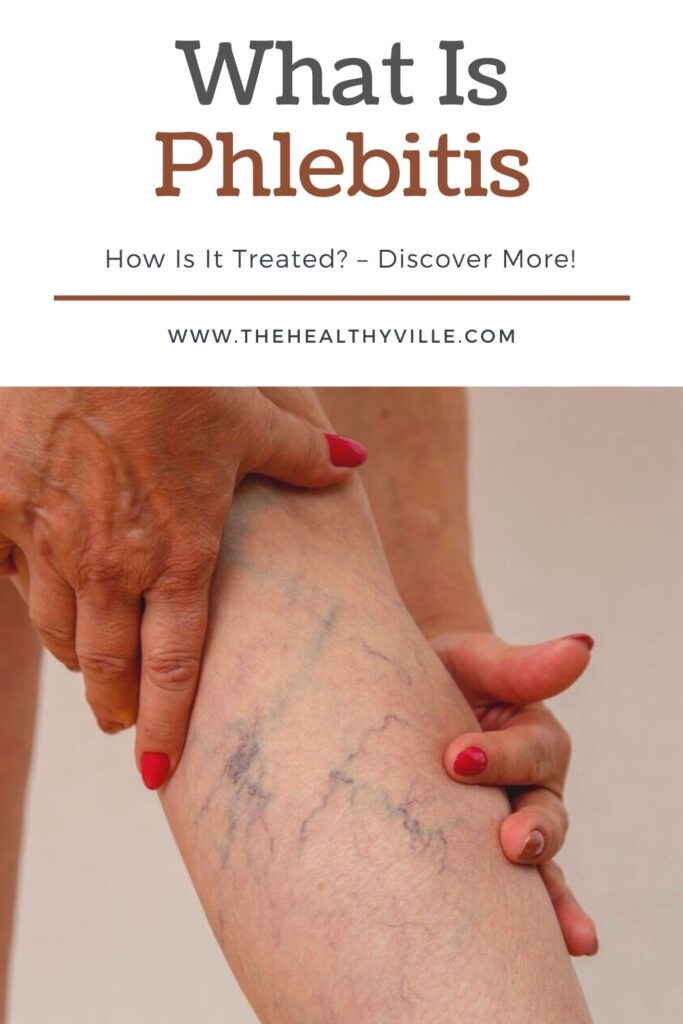What is phlebitis and how is it treated? Is it a dangerous condition? Can you treat it at home or do you absolutely need medical assistance?
Phlebitis is characterized by the appearance of a clot in a vein or group of veins, whether they are superficial or internal. Treatment is usually fairly straightforward, but requires promptness.
Phlebitis, also known as thrombophlebitis, is an inflammatory process that results from the formation of a blood clot that blocks one or more veins, usually in the leg. There are two main types: superficial – near the outermost parts of the skin – and deep – within a muscle.
According to professional medical portals, superficial thrombophlebitis is a fairly common pathology, since estimations are that 3 to 11% of the general population suffers from it at some point. Its appearance is more common from the sixth decade of life and in the female gender.
What Is Phlebitis and How Is It Treated?
Phlebitis is, obviously, a complex condition, so it needs proper treatment. Therefore, learn what is phlebitis and how is it treated.
Main symptoms of phlebitis
We can distinguish two phlebitis categories: superficial and deep – also known as deep vein thrombosis or DVT. The clinical signs will vary depending on each one. Still, the United States National Library of Medicine shows us the general symptoms:
- Inflammation in the affected part of the body: usually occurs in the leg.
- Pain in that area.
- Redness of the skin: not always present.
- Heat: with sensitivity over the plugged vein.
Superficial thrombophlebitis is accompanied by reddening of the skin and the appearance of a hard, red cord under it, tender to the touch. DVT is less obvious, characterized by generalized pain and swelling.
Causes of phlebitis
Phlebitis occurs when a blood clot settles in one or more veins, causing swelling in them. The Mayo Clinic and other sources already cited show us the most common causes of this pathology. Among them we find the following:
- An injury to the vein.
- An inherited bleeding disorder.
- Staying immobile for a long time, as is the case with people who need hospital treatment.
- A pacemaker catheter that has passed through the vein through the groin.
- Pregnancy and having given birth in the last 6 months.
- Obesity and overweight.
In general, venous clots appear when something slows or changes the flow of blood in the veins. Any pathology that has this side effect (from obesity to certain surgical processes) can lead to superficial or deep phlebitis.
How to diagnose it?
The health care provider usually diagnoses the patient based on the appearance of the affected area. However, if you cannot easily identify the underlying cause of the phlebitis, you may need blood clotting studies, venograms — X-rays to view veins — genetic tests, and special types of ultrasound.
Risk groups and complications of phlebitis
The average age of patients with phlebitis is over 60 years, mainly female. In addition, 90% of superficial thrombophlebitis happen to people with veins with varicose veins, while only 10% of them correspond to patients with healthy veins.
According to the AXA Healthkeeper Foundation, there are several risk factors that promote the development of phlebitis. Among them we find the following:
- Obesity: poses a great risk for multiple heart diseases. Without going any further, an excess of body mass can cause cardiovascular diseases, heart failure and sudden death.
- Smoking: predisposes to the formation of thrombi in arteries and veins.
- Hormone therapy: Birth control and hormone replacement pills can make the blood more prone to clotting in certain patients.
- Prolonged immobility: This may be due to hospital admissions or an overly sedentary lifestyle.
Beyond these common events, it can also be due to the presence of a pacemaker in the central veins, a family history of blood clotting disorders, a history of cerebrovascular accidents and many other clinical pictures. Any pathology that modifies the venous flow can translate into phlebitis.
As far as complications go, if your doctor identifies phlebitis early you can treat it appropriately. If you do not treat it properly , unfortunately a blood clot can develop in the lungs, familiar to the public as a pulmonary embolism.
Available treatments
The angiologist and vascular surgeon are the professionals in charge of treating a phlebitis picture. The healthcare provider usually prescribes the following medications in less severe cases: pain relievers, blood thinners, and antithrombotics to dissolve the clot.
In patients with a more difficult clinical picture to address, surgical removal of the obstructed vein may be considered if it is superficial. Or also perform a venous bypass. These procedures are much less common than those already mentioned.
Move to avoid phlebitis
As you may have seen, phlebitis is a fairly common pathology, especially in elderly people who have varicose veins in the legs. It is a clinical picture with a positive prognosis. But it can become worse if you do not treat it properly.
To avoid phlebitis, the best thing you can do is lead a healthy lifestyle: get moving, exercise, don’t use tobacco, and stay away from high-calorie foods. Obesity can cause multiple diseases, and thrombi are one of them.
Don’t forget to SHARE what is phlebitis and how is it treated with your friends and family on your social networks!

